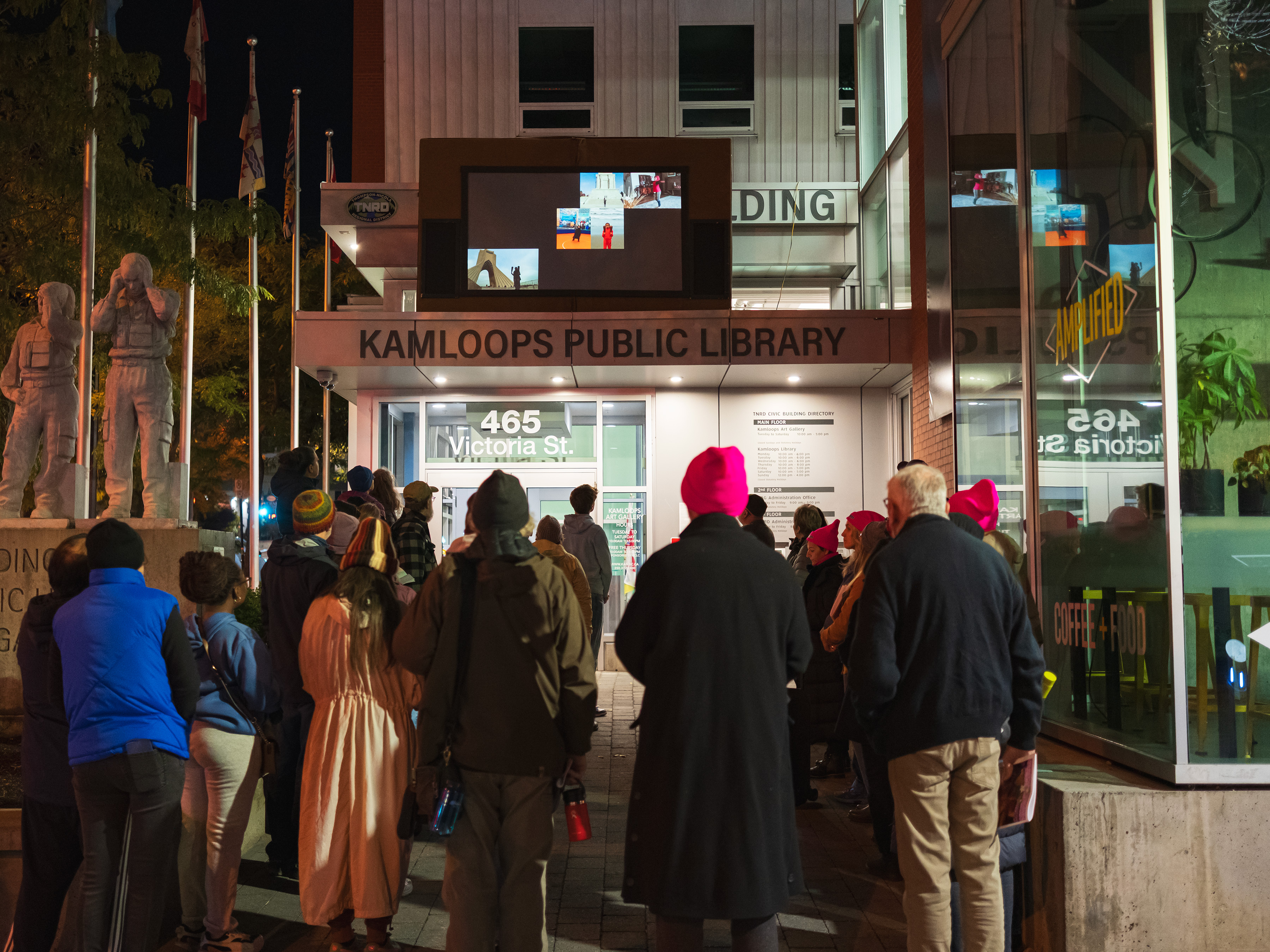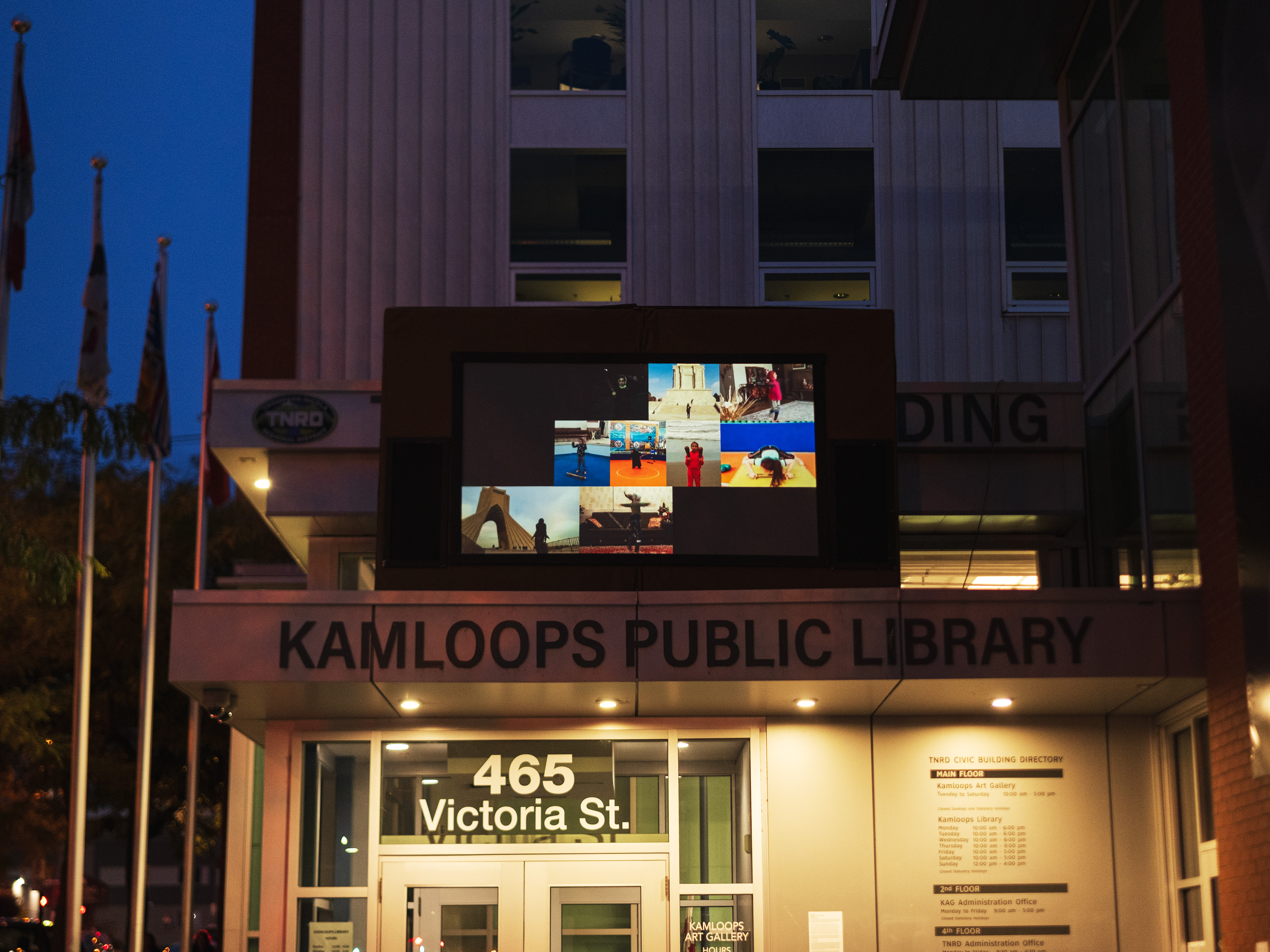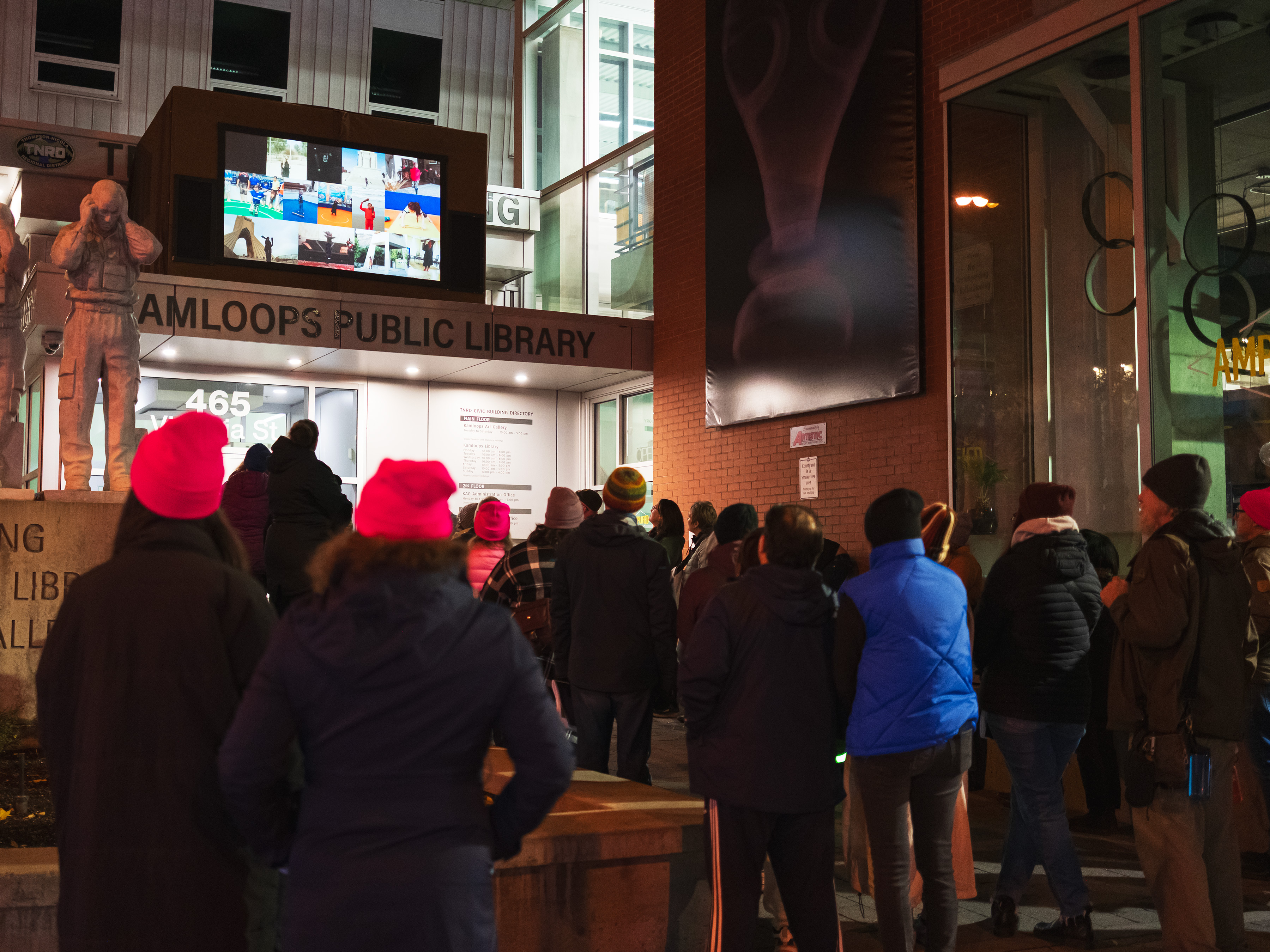Why should I stop?
Leila Zelli, Why should I stop? , 2020, videos, color, sound, texts
This work, conceived specifically for the exhibition ‘Quelque part, autrement’ (Galerie de l’UQÀM, 2020) by Leila Zelli, pays tribute to the strength and resilience of a group of Iranian women athletes. Following the government's decision to ban women from practicing Varzesh-e Bâstâni in public, many turned to social media to post images of themselves practicing this ancient sport, traditionally reserved for men. Leila Zelli has put together a montage of videos taken from an Instagram account dedicated to this cause, then looped them to emphasize the courage and tenacity of these athletes in the face of adversity. The presence of several young girls clearly suggests that women's struggles in Iran will continue, and that they are not about to stop. Read in Persian by the artist, the poem “Il n'y a que la voix qui reste”, by Forough Farrokhzad, from which the title of the work is taken, doubly anchors the work in a poetic and historical perspective. Finally, as an echo of these women's militant approach, the artist filmed herself, barefoot and wearing traditional pants, walking in circles with an assertive step in a zoorkhaneh (traditional gymnasium), found in a wooded area near her Montreal home. She also uses Instagram to share documentation of her learning the rudiments of Varzesh-e Bâstâni, taught by her father.
The musical piece heard on a loop within the main video is Maryam Akhondy's ‘Zoorkhaneh’, featured on one of the artist's online video extracts.
![]()
![]()
![]()
![]()
![]() Exhibition view, Faux plis par hypothèses, 2024,Galerie de l’UQAM. Photo:Galeriede l’UQAM
Exhibition view, Faux plis par hypothèses, 2024,Galerie de l’UQAM. Photo:Galeriede l’UQAM
![]()
![]()
![]() Luminocity, commissarié par Charo Neville, Kamloops Art Gallery, 18-25 octobre 2025
Luminocity, commissarié par Charo Neville, Kamloops Art Gallery, 18-25 octobre 2025
Photo : Frank Luca
‘’At its most moving, the biennial underscores that expressions of joy are no small thing; they can be potent acts of resistance to powers that seek to oppress or erase. Leila Zelli’s Pourquoi devrais-je m’arrêter? (Why Should I Stop?, 2020–21) pairs a montage of social-media clips of Iranian women practising varzesh-e bāstāni (a traditional martial art) with a video of the artist pacing around a makeshift zurkhaneh (gymnasium). Given that women are often prohibited from performing the sport publicly in Iran, their exuberant presence in online public space blazes particularly bright.’’ Frieze
‘’Resilience can be found just around the corner from Vicuña's work in Leila Zelli's Un chant peut traverser l'océan (A chant can cross the ocean) (2023–ongoing), which features hundreds of shapes stamped directly onto the wall, each representing an Iranian woman waving her hijab above her head—perhaps like a weapon. Echoing the outcry for women's rights in Iran, Zelli captures another moment of defiance and liberation in her two-screen video installation Pourquoi devrais-je m'arrêter? (Why should I stop?) (2020–2021), which showcases Iranian women practising a traditional form of athletics despite being banned from the sport.’’ Ocula
Leila Zelli, Why should I stop? , 2020, videos, color, sound, texts
- Part of the Musée d’art contemporain de Montréal collection.
- Presented as part of the virtual exhibition Quelque part,
autrement, QUADrature, Galerie de l'UQÀM, 2020,
Curated by Arianne De Blois
-
Presented at the Nuit des idées 2021, Galerie de l'UQÀM in
collaboration with the Consulat général de France à Québec
- Presented at Rencontres internationales de la photographie en Gaspésie, July 15 - September 30, 2021
- Presented at
Faux plis par hypothèses , Galerie de l’UQÀM,
6 septembre – 9 novembre
2024
- Presented at the 2024 Toronto Biennial
- Presented at Luminocity 2025, Kamloops Art Gallery, commissarié par Charo Neville, 18-25 octobre, British Colombia
This work, conceived specifically for the exhibition ‘Quelque part, autrement’ (Galerie de l’UQÀM, 2020) by Leila Zelli, pays tribute to the strength and resilience of a group of Iranian women athletes. Following the government's decision to ban women from practicing Varzesh-e Bâstâni in public, many turned to social media to post images of themselves practicing this ancient sport, traditionally reserved for men. Leila Zelli has put together a montage of videos taken from an Instagram account dedicated to this cause, then looped them to emphasize the courage and tenacity of these athletes in the face of adversity. The presence of several young girls clearly suggests that women's struggles in Iran will continue, and that they are not about to stop. Read in Persian by the artist, the poem “Il n'y a que la voix qui reste”, by Forough Farrokhzad, from which the title of the work is taken, doubly anchors the work in a poetic and historical perspective. Finally, as an echo of these women's militant approach, the artist filmed herself, barefoot and wearing traditional pants, walking in circles with an assertive step in a zoorkhaneh (traditional gymnasium), found in a wooded area near her Montreal home. She also uses Instagram to share documentation of her learning the rudiments of Varzesh-e Bâstâni, taught by her father.
The musical piece heard on a loop within the main video is Maryam Akhondy's ‘Zoorkhaneh’, featured on one of the artist's online video extracts.








Photo : Frank Luca
‘’At its most moving, the biennial underscores that expressions of joy are no small thing; they can be potent acts of resistance to powers that seek to oppress or erase. Leila Zelli’s Pourquoi devrais-je m’arrêter? (Why Should I Stop?, 2020–21) pairs a montage of social-media clips of Iranian women practising varzesh-e bāstāni (a traditional martial art) with a video of the artist pacing around a makeshift zurkhaneh (gymnasium). Given that women are often prohibited from performing the sport publicly in Iran, their exuberant presence in online public space blazes particularly bright.’’ Frieze
‘’Resilience can be found just around the corner from Vicuña's work in Leila Zelli's Un chant peut traverser l'océan (A chant can cross the ocean) (2023–ongoing), which features hundreds of shapes stamped directly onto the wall, each representing an Iranian woman waving her hijab above her head—perhaps like a weapon. Echoing the outcry for women's rights in Iran, Zelli captures another moment of defiance and liberation in her two-screen video installation Pourquoi devrais-je m'arrêter? (Why should I stop?) (2020–2021), which showcases Iranian women practising a traditional form of athletics despite being banned from the sport.’’ Ocula